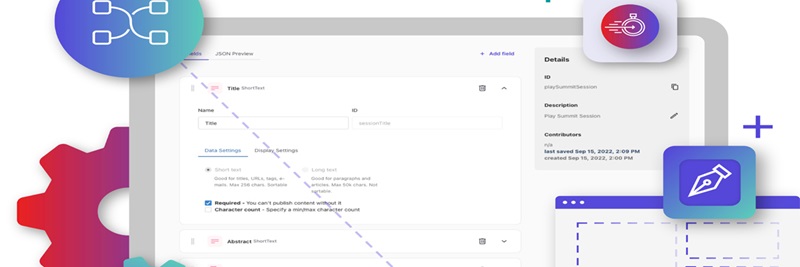Sitecore Introduces Content Hub One, a Pure Headless CMS

As Sitecore continues to reimagine and reposition its core product line to meet the vision of a truly composable digital experience platform (DXP), Sitecore Symposium is always a buffet of new information on their status and roadmap. It was clear from the start that they have entered the next phase of their rollout from SaaS product acquisition to seamless integration. Three distinct clouds have begun to coalesce around the wider Sitecore marketing cloud—Content Cloud, Engagement Cloud, and Commerce Cloud. However, it was their changes to the Content Cloud that piqued my interest, particularly Sitecore’s introduction of Content Hub One.
What is Content Hub One?
Content Hub One is an approachable, lightweight, pure headless CMS offering. At the Sitecore MVP Summit, I was lucky enough to get the inside track from product manager Ezgi Göçücü who gave us a compelling demo on what the GA will look like for this new product and where it’s headed afterward. While XM Cloud will remain the enterprise CMS that carries forward the heritage of the current CMS, aimed at managing complex content for the web channel, Content Hub One will be nimbler and more streamlined than XM Cloud. It is a cloud-native, agile CMS that is a better fit for content that is channel agnostic—allowing digital marketers to quickly model, construct, and deploy campaigns to a wide range of channels (web, app, kiosk, social media, etc.) without worrying too much about deployments. Its competitors are closer to products like Contentful that enable content authors to quickly roll their own content models to store data and map them to create desired experiences. Developers can then leverage a variety of SDKs and APIs supporting popular front-end frameworks to deliver the presentation, allowing digital marketing teams to stay laser-focused on creating meaningful content.
Content Hub One’s initial features include:
- Flexible content modeling
- Basic content authoring and publishing
- Simple media management
- Search, filtering, and sorting
- Delivery preview and content management API
How is It Different from Content Hub?
At first, I thought this might be a rebranding of CMP capabilities from Content Hub but on closer inspection, this is not the case. While the product has its origins in Content Hub, it is a distinct product in its own right—a composable piece of the puzzle in the way that Content Hub DAM could be used independently as a product. It seems intentional that customers might view the wider Content Hub suite as a natural progression if they are having success with Content Hub One—like adding Content Hub Operations to better manage your whole editorial process/calendar in one place. A soft and less expensive entry point to dip a toe into Content Hub, if you will.
“This solution is an entry point to the Sitecore content portfolio that allows customers—when they’re ready—to upgrade to the full capabilities of Content Hub.”
Perhaps the name will change to reduce the potential confusion in “Content Hub” branded offerings.
How Will Content Hub One Evolve?
While it’s meant to be a simpler service, it’ll be very lightweight from a feature perspective too in its first iteration—particularly the omission of multilingual support and content author workflows. However, what we’ve learned is that many new features are firmly on the roadmap such as…
- Localization
- Field validation
- Bulk operations for publishing and uploading
- More robust field-type selection
Considerations You Should Make When Evaluating Content Hub One
When evaluating whether a simplified headless CMS like this is right for you, there are a few things to consider.
- First, your digital marketers and content authors need to have a firm handle on UML modeling principles. If a non-tech savvy marketer is looking for lots of pre-templatized content models and authoring guardrails, they’d be more at home in XM Cloud. Content Hub One will work best for those that need to spin up campaigns quickly and have the development resources to produce custom code to serve up structured content in an array of channels.
- If a flexible design system of interchangeable web components and page types is what you’re after, XM Cloud will make more sense as this has been Experience Manager’s forte for years.
- Likewise, if robust web personalization rules are required, it may be wise to push content to XM Cloud for decisioning rather than trying to serve the variations from Content Hub One directly.
Looking Ahead to Content Hub One’s Future
Sitecore Content Hub One is going to grow and mature. And as it does, it’s likely to become a viable player in its niche, especially considering Sitecore’s years of experience building content management services. The barrier to entry for them is relatively low and with as all the other composable solutions fall into place it will be set up to deliver value. It will be some months yet before we have general access to Content Hub One, but until that time, we’ll be patiently watching this space for updates from Sitecore.




